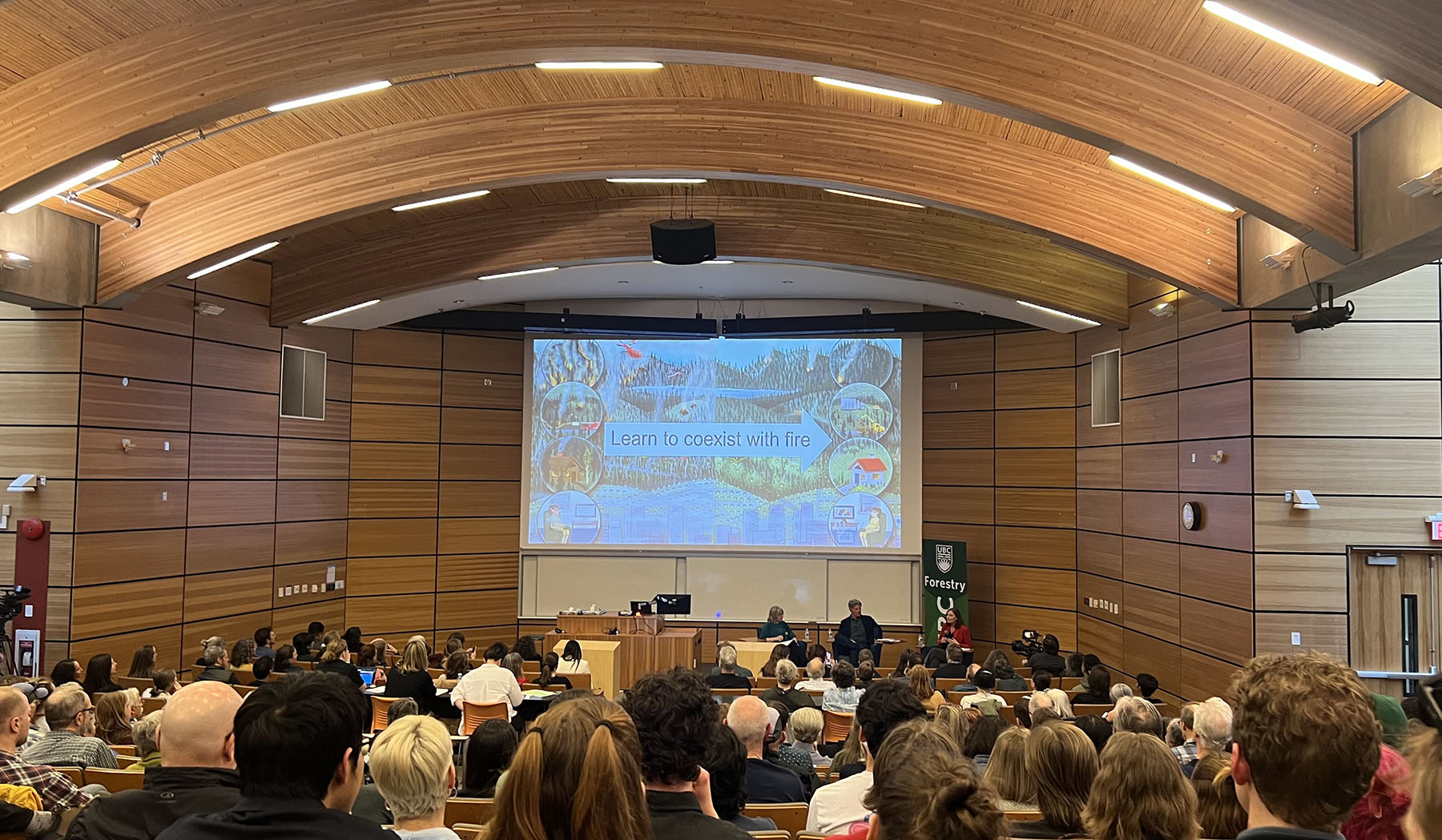A trio of leading voices including academics and bestselling authors recently participated in a campus event to raise awareness over the growing threat of wildfires in British Columbia and along the West Coast.
The event, titled West coast fire: Coexisting with urban wildfires in BC, was held last month and was moderated by UBC professor Suzanne Simard, and featured UBC Professor Lori Daniel and Vancouver- based author and journalist John Vaillant.
The conversation addressed the severe impact of fires on individuals and communities as well as fire’s significant role in urban society and its reshaping of communities, ecosystems, and our sense of security.
Yet rather than just being a warning of more frequent and intense fires, the discussion raised the need for a collective perspective shift: to move from fear and suppression of this natural occurrence towards one of understanding, adaptation and coexistence.
British Columbia has had a long history with fire. In 1886, Vancouver faced a fire that resulted in an estimated 20 deaths and burned so hot that most of the young city’s buildings burnt to the ground in about 45 minutes. More recently, the 2023 McDougall Creek Fire burned an estimated 13,500 hectares in the Okanagan putting 35,000 people under an evacuation alert.
Although part of the Pacific temperate rainforests, the region isn’t immune to the risk of burning. And in recent decades the conditions that lead to wildfires have been progressively worsening. Environmental factors such as drought, warmer temperatures, and low humidity have been exacerbated, making our surroundings more fire prone. As discussed during the event, climate change has played a role in creating these conditions.
The 2023 wildfire season in BC broke records. The government describes it as the most destructive in the province’s recorded history with than 2.84 million hectares of forest and land burned.
The devastation of the Fort McMurray fire in 2016, Fort Nelson in 2015, and this year’s Los Angeles fire further expose the danger posed by fire and these changing conditions.
Daniels acknowledged that due to these incremental changes in weather conditions, BC crossed a tipping point for fires in 2005, joining parts of Australia and California as a global wildfire hotspot.
Simard addressed the complex nature of fire and its many roles. She stated that fire is not just destructive but is also part of a broader, natural cycle that’s essential to an ecosystem’s biodiversity and health. Yet it is the impact of human activity that’s intensifying the frequency and scales of fires, emphasizing its increasingly destructive nature.
Vaillant, author of the bestseller Fire Weather, spoke further on this point, highlighting fire as a defining element to modern humanity. “Do you know how much fire people use globally in a day?”, the author asked the audience.
Vaillant said human civilization has been shaped by fire, from prehistoric survival to industrialization, and to modern times dominated by technological innovation. However, our reliance on combustion has also made us vulnerable.
Wildfire in our region is a problem, but as Daniels pointed out, many experience a disconnect to this danger due to the perceived security of our homes and a recent history of encouraging fire suppression.
B.C. became the first province to ban the practice of indigenous cultural burns with the Bush Fire Act of 1874, with other provinces following suit in the early 1900s. These government policies were based on the perspective of focusing on fire’s destructive properties alone, ignoring the practice of intentional burning that had been carried out by First Nations to reduce flammable overgrowth.
Vaillant raised the idea that humans must now accept and respect the role of fire in daily life, much like adapting to “living with bears and coyotes”.
Discussion then led to strategies for our communities to co-exist with fire. Some of things mentioned included using fire-resistant materials for homes and buildings and fire-conscious urban planning. For example, recognizing the risk of fire when building schools, similar to accounting for the risk of earthquakes.
Recent and previous wildfires have left a detrimental effect on communities, families, and neighbourhoods in our region. These aren’t distant tragedies but the realities of modern life, whether on Canada’s West Coast, the boreal forests of Northern Alberta, or elsewhere around the globe.
During the event, Daniels, Vaillant, and Simard all reminded the audience that the risk of fire isn’t going away – and neither will humans. The knowledge and resources required are there, it’s just the matter of collaboration, preparation, and adaptation.
OLIVIA HAI LAI JIAO IS A STUDENT AT UNIVERSITY HILL SECONDARY SCHOOL.
Learn more on fire safety precautions, seasons, and forecasts here:
- BC Fire Code
- Wildfire Season summary
- Canadian Wildfire Information System
- UBC Sustainability
